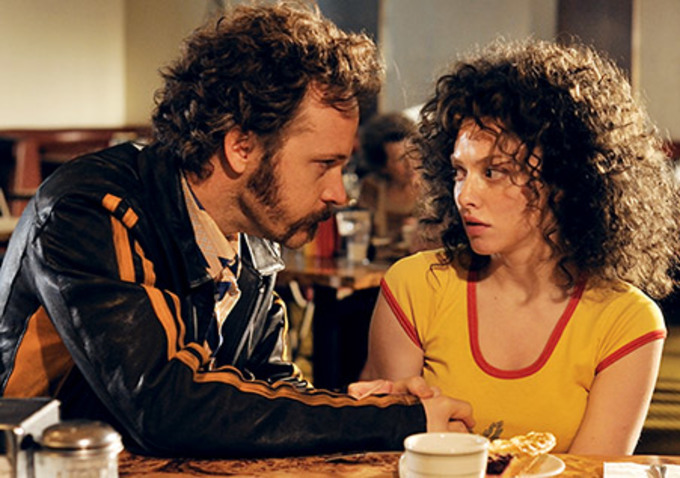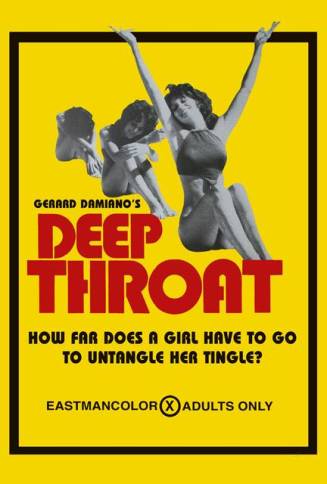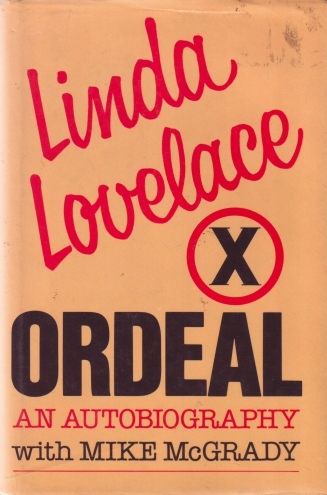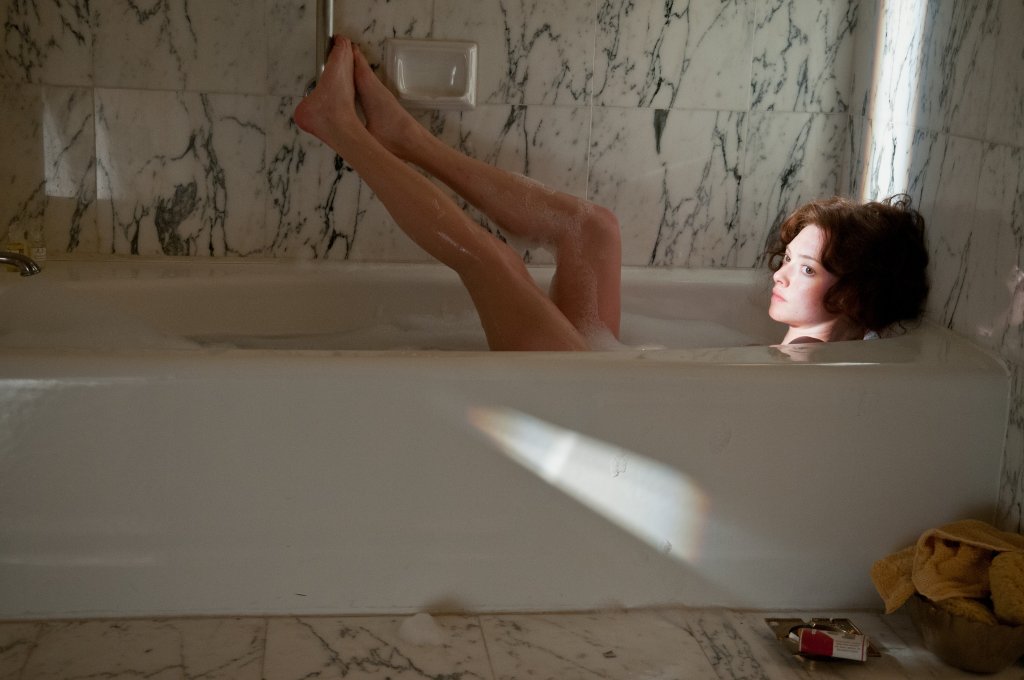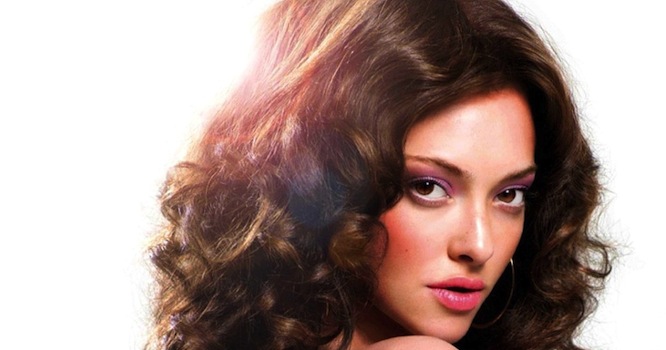With Lovelace (now in theaters), the acclaimed nonfiction feature tandem of Rob Epstein/Jeffrey Friedman touches on another culturally formative period for America—and focuses on yet another unique individual that changed nation’s mentality, morality and gaze forever. After Howl’s dedication to Allen Ginsberg and the breakthrough moment in American history when, somewhere in between literature, law and everyday life, the term “obscenity” was being defined, the auteurs behind The Celluloid Closet turned their attention to Linda Lovelace. Famous for her extreme performance in Deep Throat, the actress-turned-activist (played by Amanda Seyfried) was objectified and exploited by the porn business—and her abusive husband, Chuck Traynor (played by Peter Sarsgaard). Epstein and Friedman focus their film on the tumultuous relationship between Linda Lovelace and her husband and show slowly Lovelace gaining her own consciousness and building a new sense of identity. I talked with the duo in Berlin after the European premiere of the film about their attempt to show Linda’s point of view.
Keyframe: Did you ever expect that one day you’d be making a fictionalized version of a Linda Lovelace’s life?
Rob Epstein: About three years ago we were given a very early [version of a] script and we were intrigued. We went back to the producers with a very different take on the story and they liked it. So, here we are.
Keyframe: How many times did you have to watch Deep Throat?
Epstein: Too many. It’s a terrible movie. It is also funny, we tried to get that in as well.
Jeffrey Friedman: I only watched the whole thing once.
Keyframe: Making this film, did you feel a certain sense of responsibility towards Linda Lovelace? Towards the memory of her?
Epstein: Well, we’re documentary filmmakers, so we always feel a responsibility for whatever subject we take on, this was no different.
Friedman: You just have more freedom to interpret. We felt we needed to be true to her story in some basic way, but had freedom to dramatize different events as we imagined them.
Epstein: Ultimately, it is our interpretation as a documentarists. The documentary is our interpretation of the subject.
Keyframe: Where does the truth lie for you? Between those stories—yours and the so-called ‘reality’?
Epstein: I think there are several truths and several ambiguities and we tried to get all of that. What’s indisputable is that Chuck Traynor was abusive and even people involved with Deep Throat said that was true. So we took that as given for that relationship. As to what was going for Linda on the set, we will never know what she really felt about her involvement [in the film]. We tried to show that as well. There were certain pleasures she got out of this experience…
Friedman: …But one of the things that excited us about the movie was that we had an opportunity to tell the story as she told it in different ways at different points in her life. As she was psychologically in a place in her life where she could understand what happened differently, she presented it differently. It doesn’t mean she’s completely reliable but we basically took her point of view.
Keyframe: To many people the most interesting part of Linda’s life is her evolution after the film, yet you’ve decided to focus on the period when Deep Throat was shot. Why?
Friedman: Well, it’s also a time of their [Linda and Chuck’s] relationship, so it’s really about her getting into and out of her relationship with Chuck. That coincided with the making of Deep Throat and her becoming an international celebrity. But we wanted to take the film to the point where she was able to speak in her own voice as we felt that that was the enactment of her feminism. She then went on to be a spokesperson but it’s not that interesting to see somebody making speeches about feminism—it’s more interesting to see a woman coming into her own and taking charge of her life.
Keyframe: You’re always very much in tune with the counter-cultural movements, whether in feature or documentaries you’ve been kind of telling this parallel, untold story of America. Does focusing on the Deep Throat period also comes out of that?
Epstein: We were very interested in that particular moment when porn was just becoming mainstream, sexual morals were changing and people were becoming more honest in the depictions of what was going on. There was also a dark side of that for some women who felt like they were not fully in control of their situation within that. There was the dark and the light and we tried to characterize that particular moment. But yes, as documentary filmmakers, we saw it as a historical film, that we were telling a story of a historical moment [in it]. The challenge for an audience of today, especially the younger, is ‘What’s the big deal with the blow-job?’ We even had to give the context of why a blow-job was a big deal then, in 1972.
Friedman: We knew we had to shoot in in a way that wasn’t pornographic and we knew that to make the [oral sex] scene believable the man was gonna have to sell it. Peter Sarsgaard and Adam Brody are the two men who get serviced by Linda and their reactions, which are very different, were just a fine way of showing what was going on.
Keyframe: Why have you decided not to include other films Linda did before Deep throat? This was not the first pornographic production she took part in.
Epstein: He [Chuck] shot a lot of those home-made loops.
Friedman: That was a film she made with him that he later sold to the peep-shows.
Epstein: We wanted to suggest it, we didn’t want to deny that reality. Chuck, in the scene when he first brings the audition tape, says that she’s done it before, she did loops… But Deep Throat was the first [proper] movie, before there were only these porno-loops. So we suggest that the information is there but we don’t show it.
Keyframe: One of your production companies was Millennium Films that focuses usually on big blockbusters such as The Expendables, Olympus Has Fallen, Texas Chainsaw Massacre 3D… How was it?
Epstein: It was actually great. Millennium really supported us every step of the way and let us make the movie we wanted to make. We feel lucky.
Keyframe: So, Sylvester Stallone indirectly financed this movie?
Epstein: I guess so! Go figure, you never know…
Keyframe: Did you interview her partner from the film, Harry Reems? He questions her version, was very anti Ordeal and claimed that in this autobiographical book she for example writes about guns, but when they talked on set she never mentions it. He thinks she just needed money at that time and this was why she wrote it.
Epstein: We didn’t interview him but we’ve read a lot of interviews and felt like we just characterized him as he performed in the film. We do not know whether Chuck had arms—we don’t know and we don’t show that. Only Linda would know that. That’s the nature of being the victim of domestic violence. He’s not gonna be wearing the gun on a holster. That’s the nature of this dynamic and that’s what we were trying to show.
Keyframe: Reems was not the only person shown in the film that is still alive [actually Reems died soon after the interview was conducted, on March 19th at the age of 65]. You also introduce Hugh Hefner. Weren’t you afraid he might be unhappy with such portrayal and, for example, sue you?
Friedman: We were very easy on Heffner. If you look at Linda’s books there were a lot of very, very dark scenes with him that we never even got into.
Epstein: We didn’t want to deal with them. They were just so ugly. It wasn’t anything we were interested in. If we were doing a different type of a movie, maybe… but that was not not the movie we were setting out to do. Our goal was to really humanize this women who felt as if she was objectified, commodified and exploited. We made our choices based on really trying to develop Linda’s character.
Friedman: Hefner to Linda was also a gateway to celebrity and an exploiter. We tried to explain those two things without going into a whole Hefner section.
Epstein: … And at the same time Linda saw an opportunity with Hefner. She saw the possibility of fame and glory so she was complicit to a degree and we tried to show that as well.
Keyframe: It’s not a secret that you’ve decided to do some reshoots. Can you shed some light on the fact why?
Epstein: On every set you make the movie three times: in the writing, the shooting and then the editing. Three different films at each of those stages. In the editing you get to see the material, the movie you really have. And what we came to understand was that the film goes full circle when Linda comes to the sense of self-acceptance—only then she’s ready to present herself to her family and ask for their acceptance, which they’ll either give or not. That’s something that, as gay men, we very much relate to and related to. You have to, as a gay man, come to claim your own identity when you’re ready to and then you present yourself to your family and they make a choice whether they accept you or not. So we felt that was the circle of the story we wanted to tell.
Keyframe: So you when you saw the first cut did feel like something was missing?
Epstein: Yes.
Friedman: When we decided to end the film in 1980 we realized we needed to have a stronger resolution.
Epstein: We had a coda which took it to 1984 and it would’ve worked if we were doing mini-series, because it really felt like we were starting another chapter and we felt like that the message we want to say about her finding her own voice and saying: ‘I am now an empowered to live the life I want to live’ was expressed in a smaller gesture. We didn’t need to have her then go on to make any kind of a proclamation. That could’ve been conveyed in a human gesture.
Friedman: And it was too many time frames. It’s already a complicated structure. To add yet another timeframe at that point in the movie you think: ‘Oh my God, where are we going now?’ So the drama really ended when she freed herself from Chuck and was able to speak for herself.
Keyframe: You had a small budget but managed to complete a truly amazing cast: Sharon Stone, Peter Sarsgaard, Hank Azaria, James Franco, Amanda Seyfried… What was your trick?
Epstein: Howl helped. I think our relationship with actors certainly helped with this one. Script-people responded to it and wanted to be a part of it….
Friedman: I think actors are really looking for something different and interesting to do. Nobody did this—or Howl—for the money. They thought it was an interesting project, had faith in us… I also think a lot of people responded to the unconventional storytelling.
Keyframe: Why did you pick Amanda, the big-eyed all-american sweetheart, the ‘Mamma Mia! girl’?
Epstein: Certainly the ‘Mamma Mia! girl’ brought a lot of those qualities to the character Linda that Linda really had. But the ‘Mamma Mia! girl’ was also in a film called Chloe by Atom Egoyan and it was that movie we got to see a whole other side of Amanda as an actress. It was that fearless side of her that we knew would be right for the part. We had a dinner meeting with her and we were full speed ahead. We met with other actresses but she was our number one choice.
Keyframe: It seems like in America young female actresses are very often preoccupied with on-screen nudity, like if shown wrong it could complicate their careers. Did you have that problem with Amanda? How did you convince her?
Epstein: In our first meeting with Amanda we brought it up with her and her manager. She said she had no problem with that and she trusted us. I think she trusted that we were not going to do anything exploitative, which was also important to us, given the subject. We didn’t want to exploit a character that felt exploited herself. So the sexuality in the movie and the nudity is all about Linda feeling free in her body. What we tried to go for was the sense of, for her, who at that point was coming from a very pure place, full of innocence which then got from her perspective, commodified and exploited, but her initial instinct was she was a hippie. It was all about free expression—which then got bastardized, but that’s what we wanted to show in terms of the nudity in the film.
Keyframe: Has Linda’s family seen the film?
Epstein: Yes, they were with us at Sundance.
Friedman: Her children, her grown children—Dominic and Lindsay came to the premiere.
Epstein: They said they are both in long-term relationships and their partners couldn’t get themselves to read Ordeal because it is so graphic and painful. And they did not know their mother, but now they really feel like they’ve gotten to know her. That was lovely to hear from them.

